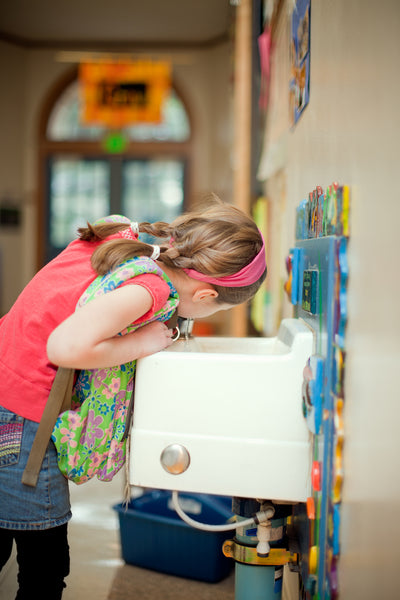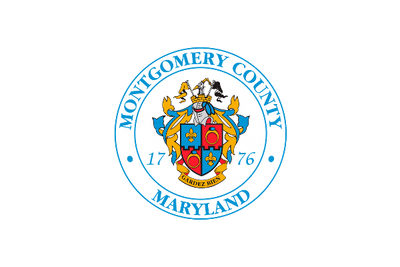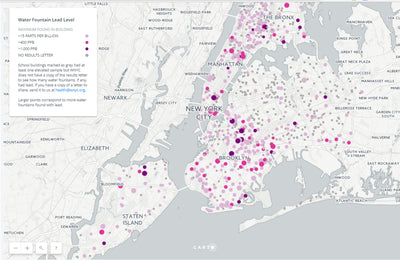Analies Dyjak, M.A. and Michael Ramos
The unresolved lead crisis in the United States disproportionately impacts young children - especially those in underserved communities. Many schools in the United States were built before 1986, when the use of lead in pipes and plumbing was still allowed. School-aged children who drink water from drinking fountains are exposed to unsafe lead levels on a daily basis. Michael Ramos, the Founder of The Noah System, created a device that automatically flushes water in drinking fountains to reduce the high lead levels in schools.
Why Are We Concerned With Lead in Drinking Water?
Babies and children are the most vulnerable to the long lasting impacts of lead exposure. Lead is a neurotoxin, and can cause lifelong irreversible damages to the brain. Children do not have a fully developed blood-brain barrier, making it easier for “unknown substances,” including lead, to cross into the Central Nervous System. Lead can be mistaken for calcium, in which the body can absorb lead as it would calcium in the brain, blood, bones, and soft tissue. The long term health effects include: slowed growth and development, learning and behavior problems, lowered IQ, attention deficit, hearing and speech problems, and underperformance in schools. Lead was also associated with Autism in a recent study by the National Institutes of Health. According to the Environmental Protection Agency, Centers for Disease Control, and American Academy of Pediatrics, there is no safe level of lead for children. The current allowable level of lead in drinking water in the United States is 15 parts per billion.
The Noah System and The Flint Lead Crisis
Michael Ramos is an engineer for Chicago Public Schools. In February of 2016, like most of the country, he watched as the failures of elected officials crippled the City of Flint, Michigan. Flint officials switched the source water from Lake Huron to the Flint River without considering a corrosion control inhibitor to reduce lead. As a result, 9,000 children under the age of 6 were exposed to unsafe levels of lead. Mr. Ramos thought of his own children, and the children he represented throughout Chicago Public Schools. He started to watch congressional hearings and grew even more concerned when the EPA officials stated that “lead in drinking water would be one of the most challenging tasks the country was going to face.” Chicago has its own ongoing issues with lead in drinking water, which he realized had not been mitigated when a school district detected 3,000 parts per billion (200 times over EPA’s Action Level).
Chicago Has Lead Mitigation Tools In Place. Why Did They Fail?
Many cities across the country, including Chicago, use a chemical called Orthophosphate to help reduce lead levels in drinking water. In order for Orthophosphate to be effective, water must run through the pipes once every 6 hours to build an anti-corrosive crust. Mr. Ramos realized that the drinking water in most schools sits stagnant in pipes for hours - well beyond the 6 hour stagnation period. Orthophosphate is unable to coat the inside of pipes when water sits stagnant overnight, over the weekends, or during school vacations.
Mr. Ramos noted that several school districts across the country flush their pipes in August, as students are getting ready to go back to school. As we now understand, it doesn’t take long for lead to collect in distribution pipes and reach unsafe levels for children. Mr. Ramos noted that a single-flushing event at the beginning of the school year “was not sufficient to make a meaningful impact on lead levels.” In short, lead levels in schools drinking water can be directly correlated to long periods of stagnation.
How Did The Noah System Come To Be?
Mr. Ramos wanted to first ensure that the water coming into his own home was free of lead. “I built a machine that would automatically flush water from the cold water line coming into my house. I took the 6 hour stagnation period and cut it in half, so water would flow through the pipes every 3 hours.” This would allow sufficient time for the Orthophosphate to build a protective crust and significantly reduce lead levels at the tap. He then asked himself: “How do I take what I built in my house and retrofit it for schools?” Mr. Ramos determined that The Noah System could be installed directly in drinking water fountains, and began building systems from his home workshop. In October of 2016, Michael Ramos installed his first Noah System in a Chicago Public School.
How Many Schools Currently Have The Noah System?
Several schools, universities, and office buildings across the country currently use The Noah System.
How Can I Learn More About The Noah System?
You can learn more about The Noah System by visiting https://www.noahsystem.co/. You can also get in touch via email by submitting your information here: https://www.noahsystem.co/pages/contact. You can schedule a free consultation by calling 708-320-3197.
Other Articles We Think You might Enjoy:What Are "Forever Chemicals" And Why Are In My Tap Water?
Do TDS Meters Provide Meaningful Information About Drinking Water?
How Did Hydroviv Filters Perform in a Duke/NC State Water Filter Study?







